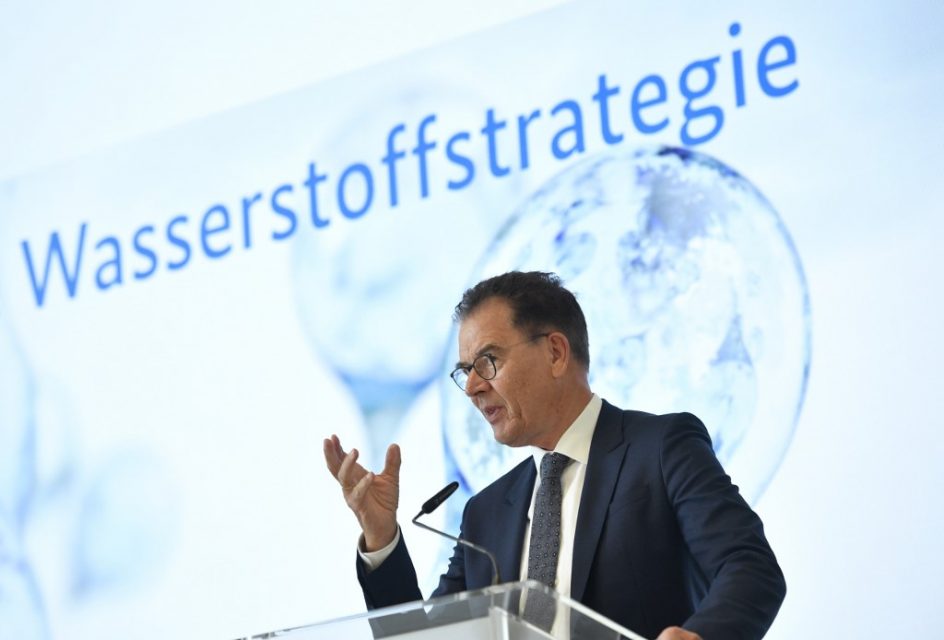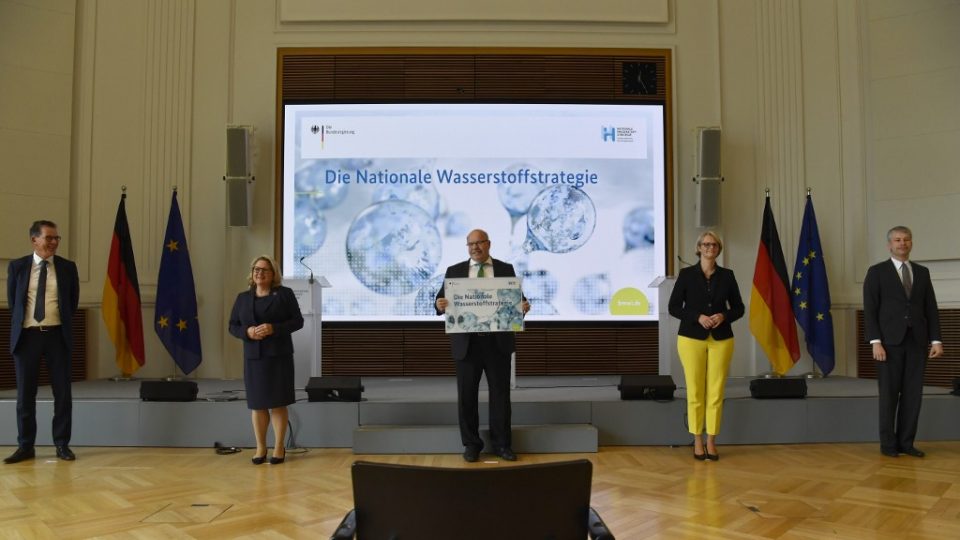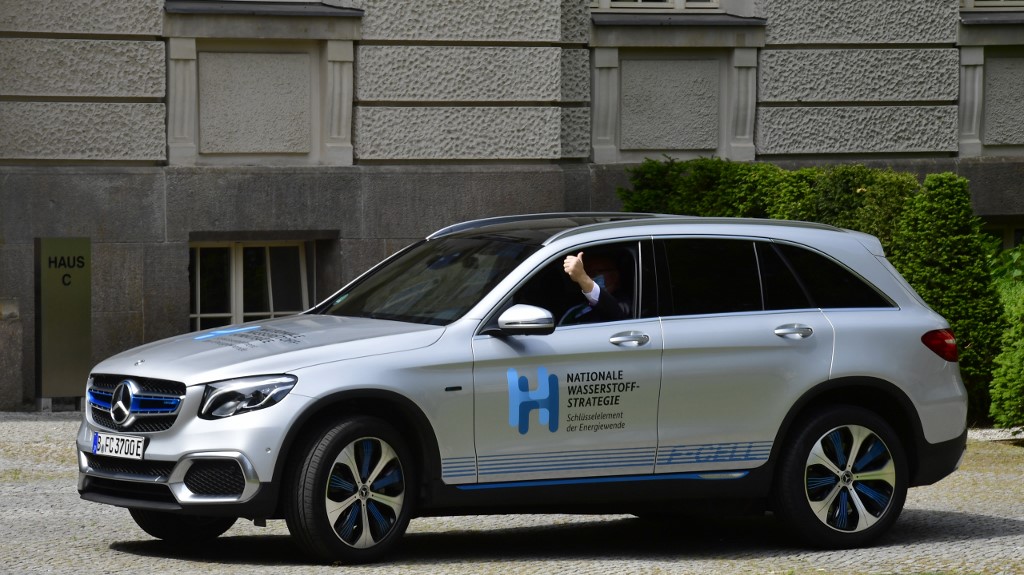
by Tom BARFIELD
Agence France-Presse
FRANKFURT AM MAIN, Germany (AFP) — Germany on Wednesday said it aimed to become the world’s “number one” in green hydrogen technology, betting the fuel produced by renewable energy sources can both reduce carbon emissions and stimulate Europe’s top economy.
“For reasons related to our competitiveness but above all to reach our ambitious climate goals”, ministers have agreed to pump nine billion euros ($10.2 billion) of government cash into the technology, Economy Minister Peter Altmaier told reporters in Berlin.
Seven billion euros will go on supporting hydrogen’s entry into the market in Germany, while a further two billion euros are earmarked for “international partnerships”, Altmaier added.
Green hydrogen is seen by Berlin as a key link in the chain between renewable energy generation and end users, allowing easy storage and transport of power generated from the sun or wind.
So-called “green” hydrogen is produced by electrolysis — using renewable electricity to split water into hydrogen and oxygen — rather than being obtained from fossil sources, as the gas historically has been.
Possible applications for the new fuel include production of climate-neutral steel, storage of energy for the winter, or powering road vehicles as an alternative to battery-electric drive, Altmaier said.
By 2030, Germany aims to build five gigawatts of hydrogen-producing capacity nationwide, rising to 10 gigawatts by 2040 at the latest.

Ministers also hope to export the technology and know-how to produce green hydrogen to other countries.
Supporting fossil fuel-exporting nations and developing countries in building up hydrogen production “means new markets for German builders of industrial plants”, which would in turn feed Germany with amounts of the fuel it cannot produce at home, Altmaier said.
“The ‘Made in Germany’ seal of quality should be stamped on green hydrogen technology,” agreed Research Minister Anja Karliczek.
Green recovery
The hydrogen strategy presented Wednesday is a part of Berlin’s 130-billion-euro recovery plan to boost Europe’s top economy as it emerges from the coronavirus crisis.
“With the launch of its hydrogen strategy in the midst of economic recovery debates, Germany shows that long-term investments in zero carbon technologies are a necessary part of the crisis response,” said Claudia Kemfert of Berlin think-tank DIW.
In steelmaking, producer Thyssenkrupp announced Wednesday a partnership with energy firm RWE to use green hydrogen in a test furnace.

The gas would replace coke and pulverised coal as a “reducing agent” to remove oxygen from iron ore, producing water rather than climate changing carbon dioxide.
Set to come online in the mid-2020s, the first unit will produce “climate-neutral steel sufficient to build 50,000 cars”, said Thyssenkrupp steel chief Bernhard Osburg.
“You can’t achieve a comparable climate protection effect with green hydrogen anywhere else” than steel, he added.
Thyssenkrupp plans to make all its steel output climate-neutral by 2050.
“All steel industry bosses recognise that in the long term, we only have a chance of producing climate-neutral steel in Germany… with green hydrogen,” minister Altmaier said.
Some observers warned that the government was lining up too broad a swathe of target industries as potential clients for green hydrogen.
Berlin hopes to use the fuel in the car industry, as foreign firms like Tesla or China’s CATL have stolen a march on the likes of BMW and Volkswagen in batteries — where most of the added value in electric vehicles is concentrated.

“Green hydrogen will be a scarce resource,” said energy and climate expert Constantin Zerger of Germany’s DUH environmental NGO.
“It should not be used in sectors that have alternatives for decarbonisation at hand. This goes for cars and heating in buildings in particular.
© Agence France-Presse








